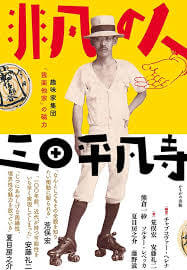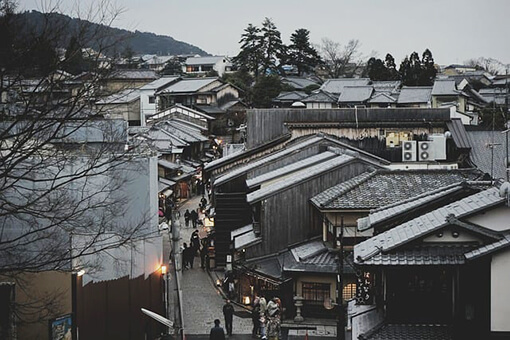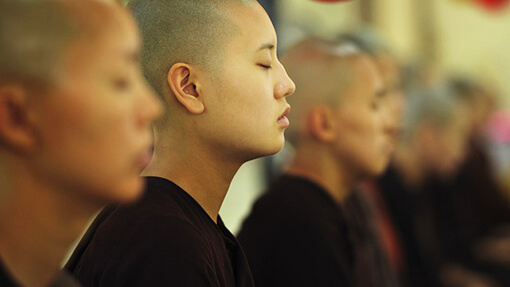Hello! It’s konkaz (@konkazuk).
I work as a gallery attendant at the Royal Academy of Arts in London, and one day, the president, Rebecca Salter (who speaks fluent Japanese and knows Japan a hundred times better than I do, despite being Japanese!), gave me a book.

I often receive Japanese-related items from her, including books, so at first, I didn’t quite understand what she meant when she said,
“My friend in Japan has sent me too many of these, so…”
… but after three or four days, when I glanced at the cover of the book that had been left in the kitchen, the katakana characters for “Rebecca Salter” jumped out at me.
“Wow, seriously!?”
… She’s one of the authors of this book!!!
I had always sensed that Rebecca, who breezes through the Royal Academy’s building with a refreshing aura, was something else. However, when I found out that she was involved in the book about the enigmatic figure “Mita Heibonji“, who had been active since the Meiji era and was probably not well-known even among Japanese people, the mystery only deepened.
Therefore, in this article, I am introducing “Hibon no Hito,” a book about “Mita Heibonji,” which was published at the end of January 2024.
Mita Heibonji and the “Garakutashu” Sect

Led by Helena Čepková, a Czech professor at Ritsumeikan University, and with the cooperation of other contributing authors, the book attempts to uncover the true identity of Mita Heibonji (real name: Rinzo Mita), an eccentric figure who led a group called ‘Garakutashu‘ about 100 years ago.
Not knowing of his existence, I read at the beginning of the book that he was mentioned alongside Minakata Kumagusu, which led me to imagine him as a rather hot-tempered oddball…
However, after finishing the book, I found him to be a completely different type of eccentric.
Mr. Heibonji,
due to an accident in his childhood, completely lost his hearing at the age of 14 and had since only been able to communicate through writing.
“How the hell he managed to be at the heart of an international network in such a state?” is one of the mysteries surrounding him and one of the themes of this book.
His motto in life is to consider ‘ordinary’ as the ideal state, so even though he was exceptionally talented at painting, when his mentor Kobayashi Kiyochika suggested he submits his work to a museum, he chose to remain an amateur.
Furthermore, to become a member of the ‘Garakutashu,’ one simply needs to become a collector of any one thing, regardless of gender, nationality, or title, emphasizing equality for everyone.
Normally, the leader of an artistic movement holds power, but he’s a bit of a complicated person who has even abandoned that. (lol)
Now, the brilliant thing about this book is that…
while each author depicts the character of the protagonist, Mita Heibonji, and the position of ‘Garakutashu’ in Japan or the world, they naturally includes explanations about the social movements and trends of Japan at the time, as well as its relations with foreign countries. This makes it a valuable resource for readers to learn about history.
Especially in Chapter 3, it is delightful that Fusanosuke Natsume, the grandson of Heibonji and one of the authors of this book, explains various aspects of the era, such as the popularity of socialism and anarchism, the introduction of avant-garde art and more.
What is “theosophy”?

One thing that caught my attention while reading this book is the frequent mention of the word ‘Theosophy‘.
Theosophy is described as…
a religious philosophy established in the late 19th century, which includes teachings on the mysteries of the universe, spiritual evolution, and human spiritual growth. It asserts that all religions possess a common sacred truth, and therefore Theosophy is considered to be the source of the world’s religions.
And the reason why ‘Theosophy’ is frequently mentioned is that some of the foreign members associated with ‘Garakuta-shu’, who appear in the book, were affiliated with Theosophy.
In Chapter 6, Professor Reiji Ando of Tama Art University writes in detail about this ‘Theosophy’. Astonishingly, he states that the abstract expressions of Russian artists Malevich and Kandinsky were derived from Theosophy!
It is speculated that the reason why foreign members were interested in the Garakuta-shu is because the philosophies overlapped between the motto of ‘Garakuta-shu’, led by Heibonji Mita, and Theosophy.
It is written that ‘Tertium Organum,’ a book by the Russian mystic and philosopher Pyotr Demianovich Ouspensky, who was influenced by Theosophy, led Malevich to Suprematism.
So, I’m a bit curious… or rather, I really feel like reading it.
I would recommend this book for …?

If asked who I would recommend this book to, I would definitely recommend it to those currently engaged in artistic activities.
If you’re thinking of making a living from art, you can’t really separate it from business.
And in this day and age, with platforms like Instagram offering access to a wide range of artworks by various artists, it appears that many artists end up chasing trends, imitating them in pursuit of sales, and consequently, fade away when those trends lose popularity.
At the point where you start focusing on business, it becomes the exact opposite of what Mr. Heibonji was doing. However, in this age of abundant variety, I believe it’s extremely important to consider one’s own position.
And I feel like there are plenty of hints hidden in this book that could help with that.
Anyway, the book can be purchased from here if you’re interested. 👇
So, this time, I introduced “The Extraordinary Man” Mita Heibonji, by Helena Chapkova, Hiroshi Aramata, Reiji Ando, Kazusa Kumakura, Rebecca Salter, Fusanosuke Natsume, and Shigeru Fujino.
And finally, I would like to express my gratitude to Rebecca for generously gifting me this delightful book.
Bye now,
konkaz
*You can read this blog post in Japanese from the link below.
👉 三田平凡寺を巡る「非凡の人」の物語:感動と啓発のメッセージ

